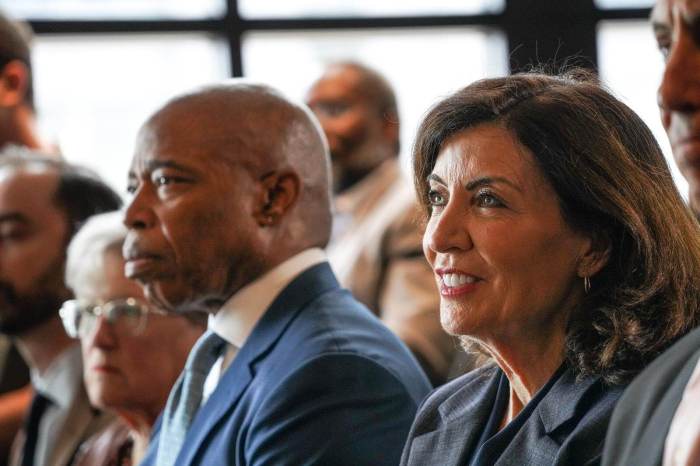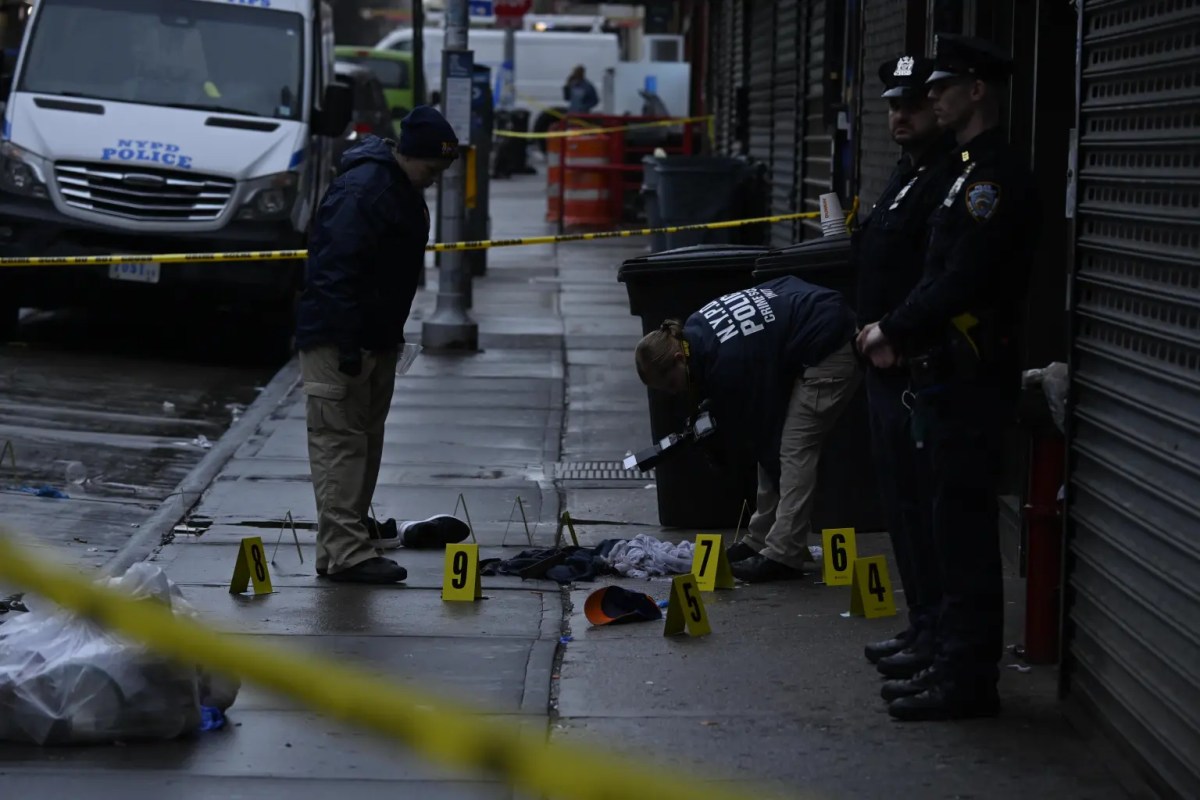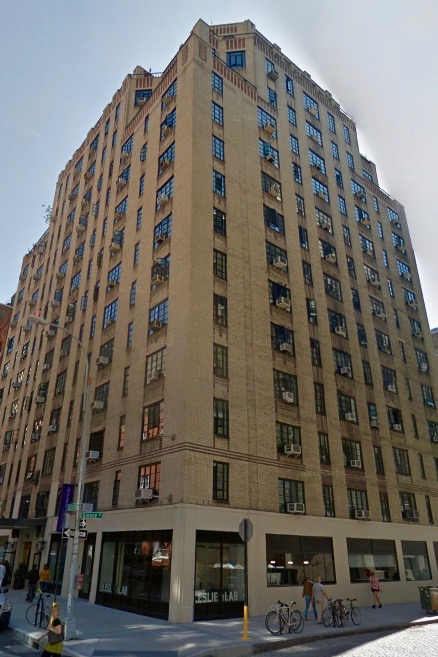
BY YANNIC RACK | The group planning a memorial for the site of one of the most devastating industrial tragedies in the country’s history has secured the support of local elected officials and even the governor — but they made their pitch without consulting the community.
The Remember the Triangle Fire Coalition, a group of labor advocates and volunteers, wants to build a permanent memorial at the corner of Washington Place and Greene St., where 146 workers died in an infamous factory fire in 1911.
But some local residents are vehemently opposed to the proposed design for the monument, which consists of horizontal and vertical steel panels running along the side of the landmarked building, at 29 Washington Place.
“There are very serious concerns,” said Mary Johnson, who lives at 14 Washington Place directly across from the planned memorial site. “I’m really worried about this, because it’s such an important part of this neighborhood.”
Even though Governor Andrew Cuomo recently pledged $1.5 million to fund the memorial, Johnson and other residents of the two buildings at 14 and 15 Washington Place say that they oppose the design because it would impact their quality of life.
“That memorial is going to be facing all of our buildings. We’re steps away from where it will be,” said Johnson, adding that residents fear the polished steel panels on the building will reflect light into their apartments and draw more people to an already crowded area.
“We’re ready to protest it because you have no idea how much activity there is on this street,” she said.
The design, chosen in an international competition almost three years ago, consists of three sets of polished steel panels running along the building’s facade.
One panel, installed at pedestrian-hip level, would tell the story of the fire in one line of words running around the entire outside of the building, and also would reflect the names of the victims — which would be etched into a second panel installed roughly 17 feet above the sidewalk.
The third panel, which would run vertically up the building’s corner to the eighth floor, is supposed to reflect a “sliver of sky” and attract curiosity from afar — making it a big point of contention for its immediate neighbors.
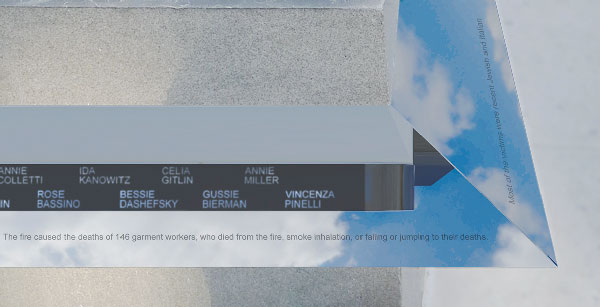
“We’re not objecting to any monument. In fact, most of us attend the commemoration for the fire every year,” said Howard Negrin, head of the Washington Place Block Association, which includes more than 200 apartments.
“But we have an objection to the very nature of the design — the discomfort it will impose on the neighborhood,” he said.
A group of residents showed up at Community Board 2’s full board meeting last week to protest the proposal, where they were met by Joel Sosinsky, the coalition’s secretary.
More so than the design itself, many of them seemed to be irked by the fact that they were blindsided by the plan.
“We’re really upset about the fact that we were not brought in early on,” said Negrin, adding that other residents at the C.B. 2 meeting echoed the sentiment.
“The whole Village is very active about anything that happens in the area,” added Johnson. “So not having any input whatsoever in this — I don’t understand really how they got so far.”
The project already has support from a range of local politicians, including City Councilmember Margaret Chin, Assemblymember Deborah Glick and Borough President Gale Brewer, who is also listed on the coalition’s advisory committee.
Sosinsky, who has been involved with the planning process for the memorial for years, defended the plan and said the coalition did in fact appear before C.B. 2 — in 2011, at which point the design had not been drawn up.
“We haven’t been back to the community board since, because we ran an international design competition. This is not a secret process,” Sosinsky said. “We would love to engage with the community.”
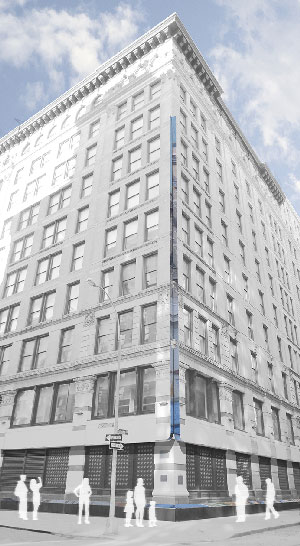
The former factory building now houses biology and chemistry laboratories for New York University, which supports the memorial design.
The coalition already takes part in the annual commemoration ceremony at the site of the fire, which was started more than 50 years ago, and also organized a large centennial celebration in 2011 that attracted thousands of people.
More than just remembering the victims who perished in the fire, the group also sees an important role for a new memorial in educating New Yorkers and visitors alike about the political and social activism — and eventually far-reaching labor reforms — that followed the factory disaster. (The building does currently have some small plaques that commemorate the fire.)
A town hall meeting has been scheduled for Tues., Feb. 23, at 6 p.m. at Hebrew Union College, One W. Fourth St., Room CL3 (photo ID is required for entry) that will give the residents a chance to weigh in, and the coalition the opportunity to defend their proposal.
“Hopefully, this will give us a chance to bring everyone together,” said C.B. 2 Chairperson Tobi Bergman.
The coalition itself still has to raise around $1 million for maintenance before the memorial can even be built. Because the building is landmarked, the community board’s Landmarks Committee will also get a chance to review the design and give its recommendation before the plan is considered by the city’s Landmarks Preservation Commission.
For his part, Sosinsky has no doubt that they will be able to bring the locals around to their idea.
“We will certainly take into account their concerns. I think they need to see and better understand what the memorial is,” he said, adding that the architects will likely present their design at the town hall.
“I think this is something that not only the neighborhood, but the whole city and the whole state is going to be proud of,” he said.












